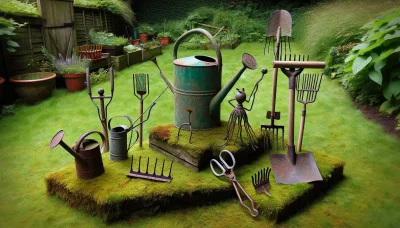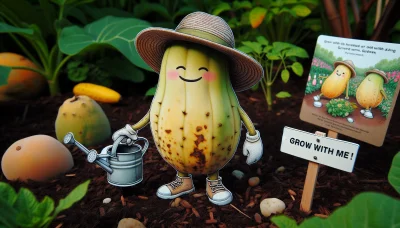Iris flower images Quiz
Test Your Knowledge
Question of
The Beauty of Iris Flowers: A Visual Journey
Iris flowers stand out in the gardening world for their enchanting beauty and the rich symbolism they carry. These stunning blooms, with their intricate designs and vibrant colors, range from deep purples and blues to bright yellows and delicate whites, creating a captivating display in any garden. Beyond their aesthetic appeal, irises hold significant meaning in various cultures, symbolizing wisdom, hope, and valor. Their unique shape and striking colors not only make them a favorite among gardeners but also a popular subject in art and mythology. The allure of iris flowers lies in their ability to transform a garden space into a tapestry of color and texture, making them a cherished choice for both novice and experienced gardeners alike.
Types of Iris Flowers
- Bearded Iris
- Siberian Iris
- Japanese Iris
How to Grow Irises in Your Garden
To successfully grow irises, it's essential to start with the right soil. These flowers thrive in well-draining soil, as standing water can lead to root rot. Before planting, consider amending your garden soil with compost to improve its structure. Irises also require plenty of sunlight to bloom beautifully, so choose a location that receives at least six hours of direct sunlight each day. When it comes to watering, irises prefer a 'less is more' approach. Water them deeply but infrequently, allowing the soil to dry out somewhat between waterings. This will encourage strong root growth and prevent overwatering issues.
Iris Flower Care: Ensuring Year-Round Beauty
- Spring Care: Remove any winter coverings as the weather warms. Begin watering the irises if the spring season is particularly dry. Fertilize with a balanced 10-10-10 fertilizer as new growth appears.
- Summer Care: Keep the soil moist but not waterlogged to encourage blooms. Apply a layer of mulch to retain moisture and control weeds. Deadhead spent blooms to promote more flowers.
- Dividing Rhizomes: Every 3-5 years, in late summer, dig up and divide the iris rhizomes to prevent overcrowding and promote vigorous growth. Replant the divisions 12-24 inches apart.
- Fall Care: Cut back foliage to a few inches above the ground after the first hard frost. Clean up any plant debris to minimize the risk of pests and diseases.
- Winter Preparation: In colder regions, cover the iris beds with a light layer of straw or evergreen boughs to protect against harsh winter temperatures. Remove the covering in spring when the threat of frost has passed.
Common Problems and Solutions for Growing Irises
Growing irises can be a rewarding experience for gardeners, but like all plants, they can encounter a range of problems. Pests such as iris borers can cause significant damage by burrowing into the rhizomes, leading to rot and decay. To combat this, gardeners should practice good sanitation by removing and destroying any affected parts of the plant and maintaining a clean garden to prevent the pests from overwintering. Diseases like bacterial soft rot and fungal leaf spot can also afflict irises, manifesting as soggy, foul-smelling rhizomes or discolored patches on leaves, respectively. Ensuring proper spacing for adequate air circulation, avoiding overhead watering, and applying appropriate fungicides can help manage these diseases. Environmental stress, including inadequate watering, either too much or too little, and exposure to extreme temperatures, can weaken irises, making them more susceptible to other issues. Providing a well-draining soil mix, mulching to conserve moisture and regulate soil temperature, and selecting site-appropriate iris varieties are key strategies for mitigating environmental stress. By understanding and addressing these common problems, gardeners can enjoy the beauty of healthy irises in their gardens.
Inspirational Iris Flower Garden Designs
Iris flowers, with their striking elegance and vibrant colors, can transform any garden into a breathtaking landscape. These flowers not only offer a rich palette ranging from deep purples and blues to bright yellows and whites but also bring a structural elegance with their unique shape. Incorporating iris flowers into your garden design can elevate the aesthetic appeal through thoughtful color schemes and strategic companion planting. For a harmonious look, consider pairing irises with complementary colors such as yellow irises with purple lavender or blue irises alongside orange daylilies. To achieve a serene and cohesive garden, plant irises in groups or drifts among perennials that share similar water and light requirements, such as peonies or salvia. This not only enhances the visual impact but also supports a healthy garden ecosystem. Embrace the beauty of irises to create a garden that inspires and captivates all who enter.
Capturing the Beauty: Tips for Photographing Iris Flowers
To take stunning photographs of iris flowers, it's essential to pay attention to lighting, angles, and composition. First, aim to shoot during the golden hours, just after sunrise or before sunset, when the light is soft and warm, giving your iris photos a magical glow. Experiment with different angles to showcase the unique features of the iris, such as its delicate petals or vibrant colors. Try shooting from a low angle to emphasize the height and structure of the flower, or capture it from above to highlight the intricate patterns of its petals. Composition is key; consider the rule of thirds to create a more interesting and balanced image. Also, don't forget to adjust the background to avoid any distracting elements, ensuring the iris remains the focal point of your photograph. With these tips, you'll be able to capture the true beauty of iris flowers in your photography.












